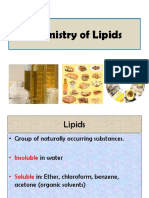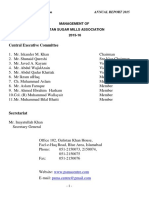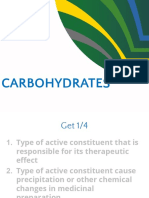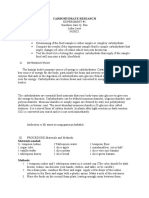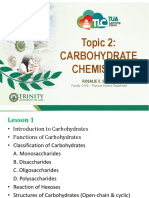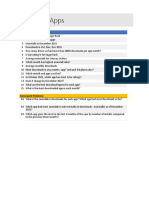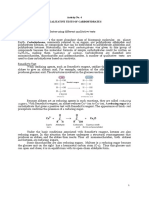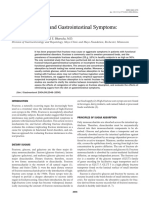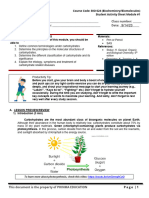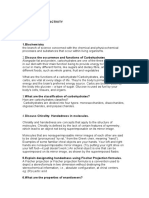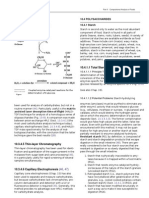100% found this document useful (2 votes)
5K views56 pagesCarbohydrates (Monosaccharides)
Carbohydrates can be classified into three main groups: monosaccharides, disaccharides, and polysaccharides. Monosaccharides are the simplest form of carbohydrates and include sugars like glucose and fructose. They can exist as open-chain or cyclic structures and take on alpha or beta anomeric forms. Monosaccharides undergo structural isomerism in the forms of epimers and anomers. They also have numerous derivative forms including sugar acids, sugar alcohols, amino sugars, and glycosides.
Uploaded by
khadijaCopyright
© © All Rights Reserved
We take content rights seriously. If you suspect this is your content, claim it here.
Available Formats
Download as PPT, PDF, TXT or read online on Scribd
100% found this document useful (2 votes)
5K views56 pagesCarbohydrates (Monosaccharides)
Carbohydrates can be classified into three main groups: monosaccharides, disaccharides, and polysaccharides. Monosaccharides are the simplest form of carbohydrates and include sugars like glucose and fructose. They can exist as open-chain or cyclic structures and take on alpha or beta anomeric forms. Monosaccharides undergo structural isomerism in the forms of epimers and anomers. They also have numerous derivative forms including sugar acids, sugar alcohols, amino sugars, and glycosides.
Uploaded by
khadijaCopyright
© © All Rights Reserved
We take content rights seriously. If you suspect this is your content, claim it here.
Available Formats
Download as PPT, PDF, TXT or read online on Scribd
/ 56













